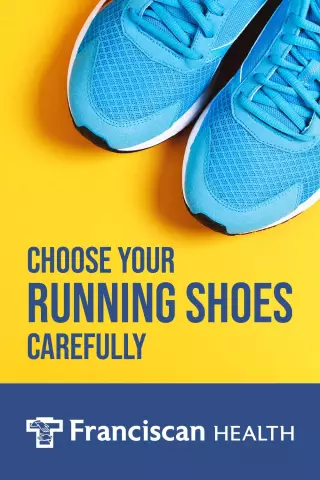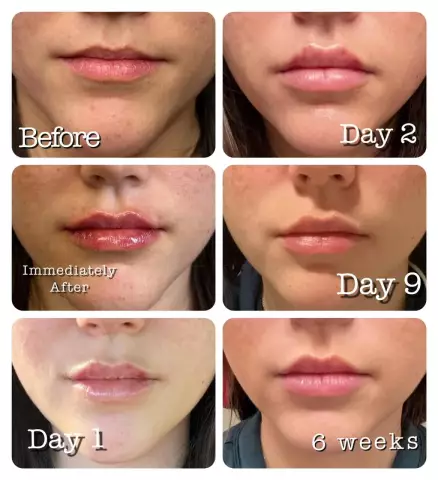- Author Rachel Wainwright [email protected].
- Public 2023-12-15 07:39.
- Last modified 2025-11-02 20:14.
How to choose shoes that are safe for your health?
Modern footwear is extremely diverse. It has long ceased to be only a protection for the legs. Today, people choose shoes, boots, sandals not so much for their convenience and functionality, as focusing on the appearance, brand and the ability to complement them with a stylish outfit. At the same time, when buying shoes, little is thought about its safety. Meanwhile, many popular models can cause significant harm to health.

Source: depositphotos.com
The most dangerous types of shoes
Orthopedists and surgeons have long compiled a kind of anti-rating of shoes, distributing the models according to the degree of danger to human health. The list refers mainly to female models, since men tend to be more sensible in choosing shoes, preferring comfortable and reliable options. So, the most harmful to health:
- shoes with high heels. If the shoes are arranged so that the heels are more than 5 cm higher than the toes, the woman walks practically on tiptoe. The main load falls on the pads of the fingers, the center of gravity of the body is shifted forward, the spine is not bent correctly. To maintain balance, you have to constantly strain the muscles of the legs and back. As a result, pathologies such as osteochondrosis of the spine, displacement of the intervertebral discs, arthrosis and arthritis of the metatarsal joints develop. Even more dangerous are open high-heeled sandals. In such shoes, the legs are poorly fixed, the feet often slip in the blocks. This increases the tension when walking, and accidentally twisting the heel, you can get a pinched nerve, dislocation or even fracture of the bones of the foot;
- shoes and stiletto sandals. The instability of the support is added to the incorrect position of the foot. Even with a sturdy heel counter and a comfortable last, the foot always moves inside the shoe, which leads to the appearance of "corns". In addition, wearing high-heeled shoes sometimes results in an ankle dislocation or tendon rupture;
- high platform shoes. During normal walking, each step is accompanied by the "rolling" of the foot from heel to toe, this involves all the ligaments and muscles of the arch of the foot and metatarsus. Shoes with a thick, stiff platform make normal foot work impossible, resulting in an unstable gait. Wearing these shoes leads to flat feet. In shoes on a high platform, irregularities under the feet are practically not felt, so a woman risks getting a ruptured ankle ligaments;
- Tapered toe pumps are extremely elegant, but far from the safest type of shoe. The narrow front part of the shoe strongly compresses the toes, leading to their curvature, ingrown nails and the development of transverse flat feet. For lovers of pointed-toed boats on high heels, the notorious "bumps" at the base of the thumbs grow very quickly, which brings a lot of unpleasant minutes. The backs of the boats are usually very hard, which is fraught with the appearance of edema and painful calluses;
- ballet shoes. Flat shoes open on top have been at the peak of popularity for several summer seasons, but wearing them for a long time is extremely harmful. If ballet flats do not have an upper bridge, they stay on their feet solely due to the fact that the woman walks, constantly tucking her toes. Plus, with a flat sole, the arch of the foot practically does not work as a shock absorber. As a result, flat feet, plantar fasciitis, and various arthrosis develop. Incorrect position of the feet and a forced shuffling gait spoil posture, which can cause back pain and osteochondrosis of the spine;
- slippers and flip flops. These models are intended for relaxation, baths and the beach, but for some reason many people use them as everyday urban shoes. Here, the potential harm to health is associated not only with the soles without instep supports, but also with the lack of fastenings in the heel area. Women who constantly wear this type of footwear experience pain in the instep, legs and heels, then in the knees and lower back. Plus, flip flops and flip flops are unhygienic. The skin of the legs in them is not protected from minor injuries and city dust, which is fraught with the development of superficial inflammatory processes;
- sneakers. Sports shoes are positioned by manufacturers as the most comfortable. And this is so, but only in those cases when it is used for its intended purpose. Walking around all day in sneakers is harmful. An expensive model, equipped with elements that help to achieve high sports results, too facilitates the work of muscles and ligaments during normal walking, which leads to a weakening of the musculoskeletal system. Cheap sneakers are usually made from artificial materials that are harmful to the skin of the feet. In addition, they lack proper instep supports and are just as dangerous as any other flat-soled shoes;
- high boots with narrow tops. They compress the shins (especially when a woman wears such models for a long time). This causes blood stasis, which can lead to thrombosis;
- rubber shoes (boots, sneakers, etc.). Modern models of rubber boots can be bright, decorated to suit any outfit and very attractive for fashionistas. However, these shoes have a quality that makes them unsuitable for everyday wear. Boots made of rubber or plastics replacing it are completely breathable. When the skin of the legs does not breathe, there is a risk of developing fungal and bacterial diseases.
Another factor that greatly affects health is shoe size. Buying tight shoes that are “going to go away soon” is a bad choice, fraught with pain in the legs and other unpleasant consequences.
Competent approach to buying shoes
After reviewing the shoe anti-rating, many women decide that safe shoes do not exist at all, but this is not the case. Firstly, today it is quite easy to find beautiful shoes and boots with heels no higher than 5 cm, with a comfortable last and suitable for everyday wear. Secondly, most of the described models will not cause serious harm to the legs if they are worn occasionally and not worn for a long time. And thirdly, you can choose shoes that will be functional, beautiful and safe if you follow the following rules:
- stop by a shoe store at the end of the day. Even healthy legs swell slightly in the evening, so shoes bought in the morning can squeeze with constant wear;
- try on both shoes. Go shopping with them and make sure they fit comfortably on your feet;
- test the flexibility of the outsole. If it is too tough, refuse to buy;
- give preference to shoes made from natural materials. This does not apply to beach slippers, wellies and other occasional wear. However, the shoes and boots that you are going to wear for a long time, as well as house slippers, should be made of genuine leather, suede or textiles;
- stock up on a few pairs of shoes for each season to alternate as needed;
- try not to purchase shoes remotely. Online stores offer a very impressive assortment, but shoes or boots are not a product that makes sense to buy without trying them on.
For the prevention of fungal diseases, it is useful to treat shoes daily with a special spray. By using insteps or liners when wearing ballerinas, you can minimize the damage that flat soles cause to your feet. It is impossible to cure already existing diseases, but these devices will help relieve pain and reduce fatigue from walking.

Source: depositphotos.com
You cannot constantly wear high-heeled shoes, stiletto heels, wedges or completely flat soles. Women who, due to their duty, are forced to stand all day long, need to change their shoes at work into comfortable shoes that match the individual characteristics of their feet (that is, not very new).
When buying shoes, it is important to consider not only their appearance, but also the likelihood of harmful effects on health. This is the only way to make a choice that you will not have to regret later.
YouTube video related to the article:

Maria Kulkes Medical journalist About the author
Education: First Moscow State Medical University named after I. M. Sechenov, specialty "General Medicine".
Found a mistake in the text? Select it and press Ctrl + Enter.






